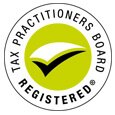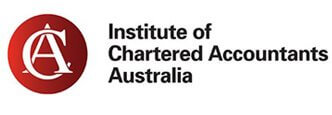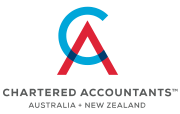
Update your ABN … or miss out!
Government agencies regularly access data contained in the ABN registration, and where this is not up-to-date the taxpayer may be missing out on stimulus measures, grants, and other government support.
This became painfully evident during the 2019-20 bushfires, and is now re-surfacing during COVID-19 when it was found that a concerning amount of ABN data was out-of-date. The ATO and the Australian Business Register are making efforts to remind businesses and relevant taxpayers that it is essential to ensure ABN registration details are accurate and completely up-to-date.
It is a business owner’s responsibility to make sure this is done (contact the Australian Business Register, see www.abr.gov.au). Once a business owner is aware of a change to the business, details on the register must be altered within 28 days. Updating ABN details will ensure:
■ the right people have the right permissions to act on behalf of a business
■ government agencies have current information – for example, if emergency services need to contact businesses during natural disasters
■ the entity is ready for new government services when they become available.
If you need assistance in updating your details please contact us.
We can also assist you to update:
■ business names
■ legal names for individuals and sole traders who need to contact the ATO directly
■ legal names for companies registered with the Australian Securities & Investments Commission (ASIC).
Name changes made by the ATO and ASIC will update the ABR automatically.
ATO’s cyber safety checklist
Scammers never seem to rest. In a new update the ATO reports that it is receiving reports of email scams about JobKeeper, JobMaker and backing business investment claims.
“The fake emails say we’re investigating your claims,” the ATO says. “They ask you to provide valuable personal information, including copies of your driver’s licence and Medicare card.”
During this time of heightened scam activity, the ATO is encouraging individuals and businesses to:
■ Use multi-factor authentication where possible and don’t share your password with anyone
■ Run the latest software updates to ensure operating systems security is current
■ Secure your private wi-fi network with passwords (not the default password) and do not make financial transactions when using public wi-fi networks
■ Exercise caution when clicking on links and providing personal identifying information
■ Only access online government services via an independent search – not via emails or SMS
■ If in doubt, call the ATO on an independently sourced number to verify an interaction
■ Educate your staff on cyber safety and scams.
To report a data breach or scam visit ato.gov.au/onlinesecurity
New Director Identification Number regime may be just around the corner
The Director Identification Number (DIN) regime may have been lost in many business owners’ peripheral vision, or even dropped off the radar completely, as it has been on the horizon for some time. But it is worth keeping in mind the ramifications of the measure, as the details could become important sooner than many realise, even before this year is out.
The legislation putting the regime in place has already been passed in June last year, but the scheme is not yet in operation. This is initiated by “proclamation”, which is required to happen within two years of the legislation becoming law.
The regime is part of the government’s “modernising business registers” program, which is intended to lessen corporate phoenix activity – the process of continuing business activity of a company that has been liquidated to avoid its debts — with the DIN regime increasing accountability by making directors traceable.
DINs will be recorded in a database that will be administered and operated by a registrar from an existing (yet to be determined) government agency. The registrar will have the power to issue DINs (once satisfied of a director’s identity) and the responsibility of recording, cancelling or re-issuing DINs. The Administrative Appeals Tribunal will have jurisdiction to review decisions made by the registrar.
Under the scheme, directors will be required to have their identity verified and have a unique and permanent identifier issued to them. Companies will need to put processes in place to ensure that all existing directors apply for a DIN within the prescribed timeframe once the regime is implemented. Also, companies will need to ensure that director appointment processes include the necessary steps for new directors to apply for a DIN. The number will continue to apply even if a director leaves their position.
Within the first 12 months following implementation, new directors will have 28 days after appointment as a director to apply for a DIN. Following this time, individuals must apply for a DIN before becoming a director. For existing directors, transitional provisions should provide a period during which they will need to obtain a DIN.
The regime is expected to have other benefits such as increasing the accessibility of important information that may assist administrators and liquidators. It is anticipated that the public will be able to search the registry and view a director’s profile, including any historic relationships with different companies. For example, if the director has had past involvement with insolvent trading, that information will be available on the registry.
The legislation introduced both civil and criminal penalties for a failure to apply for a DIN within the required time frame, with criminal penalties for deliberately providing false identity information or a false DIN to a government body and intentionally applying for multiple DINs.
The procedures and documents required to obtain a DIN are not included in the legislation, and will probably be set out in a separate announcement in the coming months.
However administrative changes introduced by the scheme may have practical implications when appointing directors on an urgent basis. For this reason, businesses need to be aware of the coming changes so they will be ready to implement procedures to ensure compliance with the law and the timely appointment of directors.
Unexpected lump sum payment in arrears? There’s a tax offset for that!
A lump sum payment in arrears is a payment you may receive that relates to earlier income years.
The tax offset that can be utilised with these sorts of payments works to alleviate the problem of a taxpayer being expected to pay more tax in a year when a lump sum of back payments is received — where they would be disadvantaged by paying more tax than if the income had been spread over several income years.
The general rule is that employment income is assessable in the income year it is received, regardless of the period the payment covers. This is still the case, however the tax offset works to restrict the amount of tax payable to the same “marginal” rate that would have applied if it were “received” in the tax year or years it relates to.
As the lump sum payment in arrears (LSPIA) is taxable in the year you receive it, it can impact your tax and non-tax entitlements such as:
■ student loans
■ child support and welfare payments.
You may also find that as a result you:
■ are in a higher tax bracket and pay more tax than you would have if you received the amount when you earned it
■ are in the same tax bracket and pay the same amount of tax as you would have if you received the amount when you earned it
■ are in a lower tax bracket and pay less tax than you would have if you received the amount when you earned it
■ have a new or increased Medicare levy surcharge obligation, because the lump sum pushes you over a Medicare levy surcharge threshold.
The ATO says taxpayers may be able to access the tax offset for certain payments, which usually relate to employment, compensation or welfare payments. To be eligible for the tax offset, a LSPIA must be 10% or more of your taxable income in the year of receipt after you deduct any:
■ amounts that accrued in earlier years (that is, this payment)
■ amounts received on termination of employment in lieu of annual or long service leave
■ employment termination payments (ETPs)
■ income stream and lump sum superannuation payments
■ net capital gains
■ any taxable professional income that exceeds the average taxable professional income.
The ATO notes that the calculation of this tax offset is complex, therefore, there is no online calculator.
Vehicle benefit FBT treatment changes under COVID-19
The special circumstances that coronavirus has thrown our way looks like having some very practical outcomes on certain areas of fringe benefits tax. One of the most prevalent and well-established category of fringe benefits centres on the provision and use of vehicles. The parking of a car, for instance, is a benefit that comes with very specific conditions regarding the taxable values that attract FBT.
A work car park closes
If, on a particular day, a business’s office is closed due to COVID-19 and therefore the work car park is also closed, the employer will not have provided a car parking benefit as there will be no car space available for use by an employee for more than four hours between 7.00am and 7.00pm on that day. The time during which the work car park is closed will not form part of the availability periods used to calculate the taxable value of a car space under the statutory method.
Closure of nearby commercial parking stations
If all of the commercial parking stations within a one kilometre radius of a business premises are closed on a particular day due to COVID-19, there will be no car parking benefits provided.
Reduced rates at commercial parking stations
If, on for example 1 April 2020, the lowest fee charged by all of the commercial parking stations within a one kilometre radius of a business premises for all day parking was less than $9.15, the employer will not have provided a car parking benefit. For example, this may occur where all of the commercial parking stations have discounted their all-day parking rate due to COVID-19.
However, the reduced fee must not be substantially greater or less than the average of the lowest fee charged by a commercial parking station operator in the four weeks prior to 1 April 2020 or the four weeks after 1 April 2020. The ATO holds that the reduced fee is disregarded for the purpose of determining the lowest fee charged by a nearby commercial parking station if it does not meet this requirement.
Car returned to employer’s business premises
An employer won’t provide a car fringe benefit where a car is not supplied for an employee’s private use or taken to be available for an employee’s private use. During a period of COVID-19 restrictions, a car that has been provided to an employee is not taken to be available for the employee’s private use if all the following apply:
■ the car is returned to the business premises
■ the employee cannot gain access to the car
■ the employee has relinquished an entitlement to use the car for private purposes.
The ATO says some factors that indicate a car is not taken to be available for an employee’s private use during these restrictions include where:
■ the employer requests that the car be returned to the business premises
■ the employee does not have physical access to the car
■ the business consistently enforces a policy that an employee cannot gain access to the car
■ if the employee has made a choice to surrender the car, they cannot change that choice and obtain the ability to access the car
■ the car is returned to the business premises and the employer applies the car to a different purpose (although a separate car benefit may arise if the car goes to another employee who applies it for private use).
Garaging work cars at an employee’s home
An employer may have been garaging work cars at employees’ homes due to COVID-19.
The employer may not have an FBT liability depending on:
■ the type of vehicle
■ how often the car is driven, and
■ the calculation method they choose for car benefits.
Log books
A business’s employees’ driving patterns may have changed due to the effects of COVID-19. If an employer uses the operating cost method, they may have an existing log book. They can still rely on this log book to make a reasonable estimate of the business kilometres travelled. They can also choose to keep a new logbook that’s representative of business use throughout the year.
Click to view our March 2021 Newsletter PDF


















